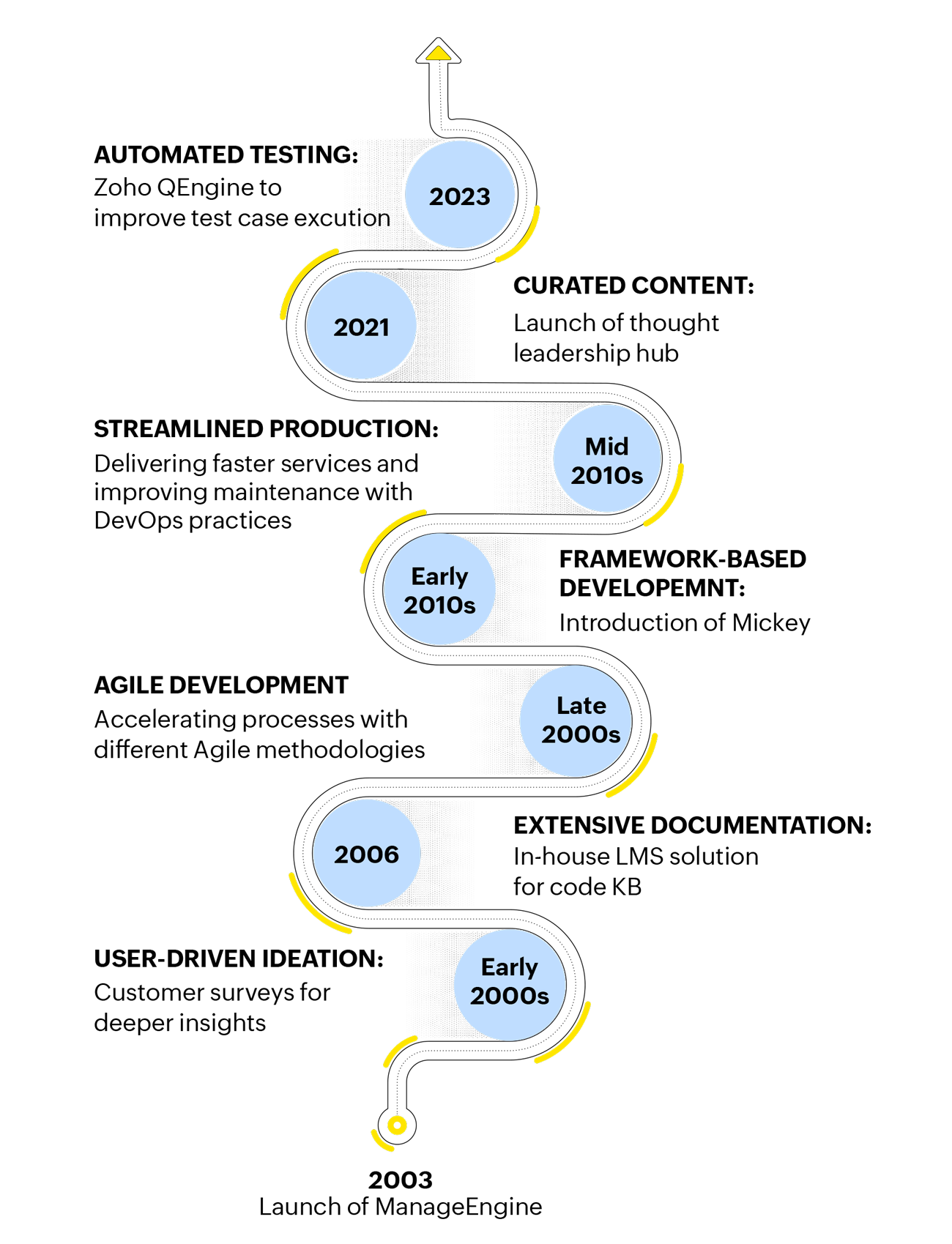Enterprise SDLC: A C-suite executive's guide to accelerating software delivery
Chapter 1: Version one isn't perfect; ship it anyway
When you’re releasing a complex feature that helps perform several functions, you are bound to face many issues. Sometimes, the release can backfire and interrupt existing services, resulting in frustrated end users, overwhelmed tech support, and confused developers. We've had a fair share of such incidents, and our back-end teams have spent hours attempting to resolve such issues.
The decades of experience in software development and release cycles have taught us two things: 1) It's always tempting to aim for perfection for every release. But this is a big mistake! 2) We believe there's no such thing as error-free releases. Incidents are an inevitable part of every release.
You're likely aware of a few things that can go wrong in the software development life cycle (SDLC). However, there are also a ton of other things that went wrong, and you'll never know until you put the current version in front of your end users/customers. At ManageEngine, we don't strive for perfection. We focus on releasing software that's functional and then work on areas that need improvement after gaining solid feedback from stakeholders and customers.
We are continuously improving our SDLC game to design a process that minimizes errors while knowing that the ideal software we envisioned may not play out as expected in the real world—and that's okay. If you're worried about customer impression, here's a little food for thought: at the end of the day, customers will not remember the bugs in your software; they'll remember how you responded to their feedback and incorporated it into your product. So go ahead and ship that software, and with a little guidance from our experiences, you, too, can optimize your SDLC.
What's ahead?
In this e-book we'll talk about:
- Our approach over two decades: Get a closer look at the changes we've incorporated into our initial strategy for software development, the new additions, and the old habits to which we bid adieu.
- Software development framework: Unlock ManageEngine's game plan for software development from ideation to release. We'll go through each stage and discuss the activities, roles, and responsibilities, and you might find some interesting trivia along the way.
- Real-life scenarios: Put your learnings into practice with a use case that challenges your understanding of the overall software development process.
- Vision for the future: Get a glimpse of upcoming activities on Zoho's software development roadmap. We'll also cover some common obstacles you may encounter and best practices that can boost your operations.
The 1990s to 2020s: What's changed?

- User feedback: In our early years, customer surveys were our go-to method to understand our user base and add features and solutions. However, surveys only gave us high-level information. Today, we use support tickets and customer feedback to gain deeper insights, effectively integrating them into our feature/product roadmap. Customer interactions help us understand customer expectations and the direction the market is headed in terms of technological growth.
- Coding practices: Waterfall was the first software development methodology introduced back in the 90s. In recent years, our SDLC practices vary across teams (based on their requirements and resources) from agile and DevOps to other practices to help teams accelerate production and release.
- In-house tools: We use several tools to drive the SDLC process. For example, we've built frameworks like Mickey and Mickey lite as well as tools like QEngine to help our development teams automate some of the processes. For instance, QEngine allows developers to execute use cases with a single click. We've also created internal tools to accelerate security checks in software builds and improve accuracy.
- Documentation: The last five to 10 years have shown us how powerful content can be. Internal documentation started out with simple documents and moved to in-depth manuals that allowed our teams to grasp the finer capabilities of our products and its features. Today, we use our own knowledge management and learning management system (LMS) platform where teams can create manuals that consist of articles relevant to their role. This is particularly useful for technical documentation, because it comes with version and privilege controls, making it a secure and reliable way to collaborate. A quick search across our in-house wiki can help developers find their way to the right manual and identify the API documentation they need to complete their task.
- User education: On the user education front, content creation has evolved from simple user guides and technical documentation to diverse and specific use cases across industries. ManageEngine has fully absorbed the importance of creating the right content for different audiences. We have dedicated teams like ManageEngine Academy for customer education to help customers understand us beyond our products so they can make the most of their IT processes.
-
Previous Chapter
‹ - ›




